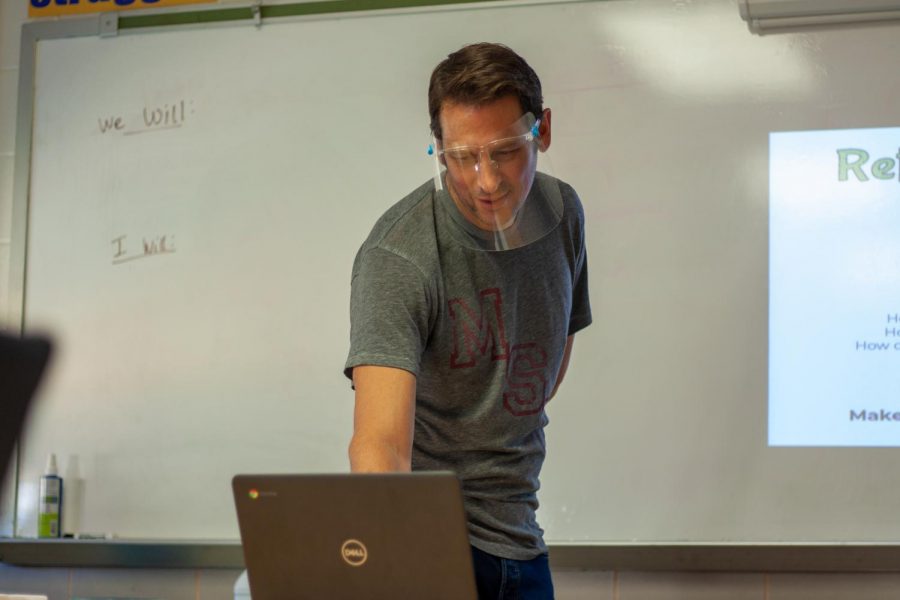The Reality of Remote Learning
Mr. Byas checks in with his virtual students during English class this week.
For many students, the first day of school is an exciting ordeal. However, for almost 30 percent of the Rider student body, the beginning of this school year didn’t have many of the same thrills. In order to avoid potential exposure to the coronavirus, these students have opted to attend school virtually.
“It was a big pace change and less hectic,” Senior Class Co-President Arman Persaud said. “Since you’re in your house, it feels like less work even though you are doing the same thing.”
Remote students are learning in a synchronous fashion, meaning that they are in video calls with their teachers throughout the day, receiving the same instructions and assignments as their peers. The only difference is, these students are able to complete their schoolwork from the comfort of their own space.
“I’m able to wake up later and not have to stress about getting to school or getting as ready as I need to be,” senior Kara Rodgers said. “And with lunch, I can just grab something from my fridge that’s just less than a minute away.”
While being a remote learner comes with added freedoms, there are several downfalls to having only digital interactions with teachers and peers. In many classrooms, at-home students are muted and use the chat box provided in their virtual meetings to communicate with the teacher and one another, making the situation feel isolating at times. Lucky for Persaud, who is on varsity tennis, after-school practices offer a chance to stay social in a safe, outdoor environment.
“We all wear masks when we’re first going into the courts,” Persaud said. “I think it’s pretty clean, and we try to social distance as much as possible.”
Technological difficulties can make it difficult to keep up with the face-to-face learners in certain situations, as well. Lagging, inability to see the whiteboard, and internet connectivity issues are few of the more common issues students face.
“On the chromebooks, it was really hard to see, it was glitching, it was really hard to hear,” Persaud said as he described an experience working in small groups with students physically in the classroom over his computer. “You couldn’t really stay in tune with students in the class.”
However, with the virus still circulating in the community, many remote students are willing to battle challenges of digital classrooms in order to secure their own safety.
“I always looked forward to school because it was a time where I could meet new people and talk to friends and talk to teachers,” junior Tina Majdinasab said. “My thing is, if I were to go to school this year I know I wouldn’t feel comfortable.”
Remote students have until Sept. 14 to choose whether or not they would like to return to a face-to-face learning environment for the second six weeks. For Majdinasab, Persaud and Rodgers, it’s uncertain whether or not coronavirus cases in the community will have declined enough by the deadline to justify a transition back into the classroom.
Since the start of school, there has been two disclosed cases of COVID-19 in Wichita Falls Independent School District (WFISD) school buildings. WFISD announced one case at Crockett Elementary on Tuesday evening, with Rider High School following suit on Wednesday. Both cases are reportedly “low-risk.”
“I don’t think I’m going to go back to school next six weeks, even though I want to, mainly because of corona. But, I want to go back as soon as possible,” Rodgers said.

